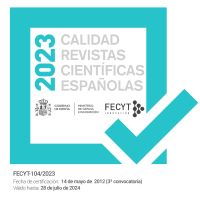PLE: Personal learning environment vs. personalized learning environment
DOI:
https://doi.org/10.5944/reop.vol.27.num.3.2016.18798Keywords:
PLE, Personalized Learning Environment, lifelong learning, knowledge ecology, web 2.0Abstract
ABSTRACT
We present the results of an empirical study that scrutinizes learning environments in the form of Personal Learning Environments (PLEs). The aim has been to reformulate the concept of PLEs, departing from the original visions held by educational psychology trainees and leading to the vision they have of PLEs after their design. 68 educational psychology university students served as participants. This research uses methodological guidelines appropriate for a case study, in that the focus is descriptive and exploratory. Data were collected from self-evaluations and reflections that the students did as they identified and interpreted their own PLEs. Thematic Analysis Method allowed us to discover meanings in participants’ reflections. We calculated the consistency of investigator interpretations of participants’ experiences using Kappa’s Cohen coefficient in an attempt to reduce bias. The interrater reliability was found to be Kappa = 0.79, indicating substantial agreement and a reliable process. The project’s scientific value comes from capturing participants’ subjective interpretations during the task of creating of PLEs. Results highlight the value of the PLE as a tool to consciously guide students’ learning. Results allow us to identify the dimensions, functionality, and implications of PLEs. Our main conclusion allows us to understand the PLE as a customized environment for individualized learning, which differs from the current vision of a standardized personal learning environment.
Downloads
Downloads
How to Cite
Issue
Section
License
Las obras que se publican en la revista REOP están sujetas a los siguientes términos:
1. Los autores conservan los derechos patrimoniales (copyright) de las obras publicadas, y garantizan a la revista el derecho de ser la primera publicación del trabajo al igual que permiten la reutilización de las mismas bajo la licencia de uso indicada en el punto 2.
2. Las obras se publican en la edición electrónica de la revista bajo una licencia Creative Commons Reconocimiento-NoComercial 4.0 Internacional . Se pueden copiar, usar, difundir, transmitir y exponer públicamente, siempre que: I) se cite la autoría y la fuente original de su publicación (revista, editorial y URL de la obra); II) no se usen para fines comerciales; III) se mencione la existencia y especificaciones de esta licencia de uso.
3. Condiciones de auto-archivo. Se permite y se anima a los autores a difundir electrónicamente la publicación de sus obras, ya que favorece su circulación y difusión y con ello un posible aumento en su citación y alcance entre la comunidad académica.






